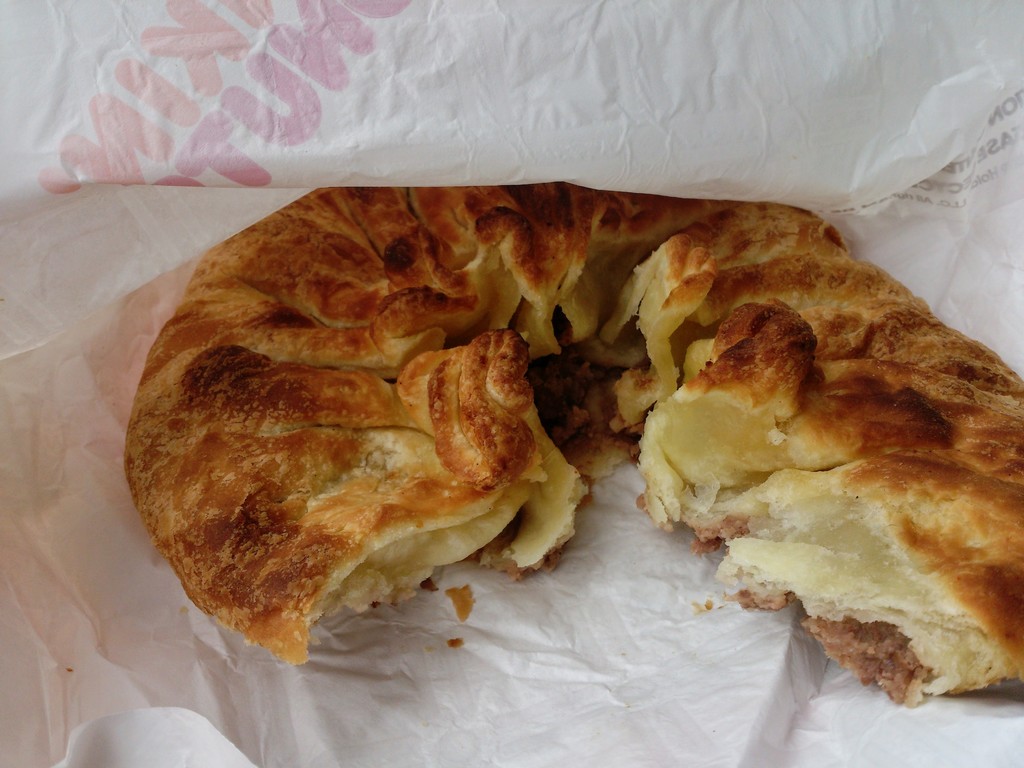Barbaroba

Now I want to tell you about this special day in Georgia and how it's celebrated, and as far as I know, that is one of the celebrated holidays in Georgia. The day is called Saint Barbare's and in Georgian it is "Barbaroba".
So the day is on December 17th and it reminds me of the snow, New Year and stuff like that because it's winter and it snows sometimes on that day and the New Year is not far from there.
There's this tradition that on the Barbaroba day people make Lobianis, There's always someone who shares an article on Facebook about that tradition and why they make Lobianis that day. I guess, you could be interested too!
History
Barbaroba or Saint Barbare’s Day traditionally was held on 4th-6th of December (nowadays it’s 17 December due to the posterior change of the calendar). Saint Barbara or The Great Martyr Barbara lived in the end of the 3rd century and in the beginning of the 4th century. Her father was a non-christian noble whose name was Dioscorus and who he kept his daughter locked in a tower to preserve her from this life - the outside world. Somehow Barbara became a Christian in that tower and then she refused a marriage proposal that she received through his father. Barbara was locked in some dwelling with two windows, but she had the third window made, too, as a symbol of Holly Trinity. When his father came back from a journey she told him that she was a Christian and he immediately took out his sword to kill her, but her prayers stopped him and made a window in the tower through she miraculously disappeared. She appeared somewhere in the mountains with two shepherds who had their flocks there. Dioscorus started looking for her and while one shepherd didn’t say anything, the other one betrayed Barbara and making her father find her and taking her back to the tower.
Barbara was cruelly tortured, but she held true to her faith. Meanwhile, many miracles occurred. Every morning her wounds were healed and torches went out as soon as they were near her to burn her. So, then his father ordered her to be beheaded, and he did that himself. Dioscorus beheaded Barbara, but then he was struck by lightning on his way home and his body was burned by a flame.
A Christian man called Valentinus buried Barbara in a tomb in Egypt. Afterwards, this tomb became a site of miracles and many people went there to be cured and stuff like that. Then her relic was taken to Constantinople and then in the 11th century Barbara, the daughter of Alexios Komnenos (the Emperor of Byzantine Empire), buried Saint Barbara’s relic in the Kievan Rus after her marriage to a noble from Kiev. And nowadays Saint Barbara’s tomb is in Kiev, in Saint Vladimir Cathedral.
People mostly ask for curing children and having babies and protecting them from a sudden death, etc.
Barbara became the patron saint of artillerymen, armourers, military engineers, miners and others who work with explosives because of her old legend's association with lightning.

Barbale
In Georgian mythology you will find a goddess called Barbale. There are different variations in the name itself, some say Barbare, and she's called Barbali or Barbari in Svaneti region and Barbala or Barbara in Mtiuleti. The name reminds us of "Borbali” (Georgian word for “wheel”) and it was associated with a circle, wheel, flames, the sun, etc. So in people’s belief, Barbale was a goddess of agriculture and cattle-breeding and she provided people with a good harvest and many products, and the cattle fertility as well as human fertility. There were many different holidays in respect of Barbale and the main one was in winter, just like Saint Barbara’s day now. There were things used in the rituals in respect of Barbale and those things mostly resembled the Sun and stuff like that.
Lobiani on Saint Barbare’s day
So, people often ask, why there’s this tradition of making Lobianis on Saint Barbare’s day. I’ve read in one of the articles about it, that this day is a combination of those two different Barbares’s days. Well, the orthodox church usually doesn’t have this tradition of preparing something for any saint, while pagans usually did that kind of things like contributing with something or even with someone. There were these goddesses in ancient pagan Georgia until it became Christian, and they were Goddess of the Sun and her mother Barbale. People used to bake round-shaped pies to resemble the Sun in respect of them. Because of the same name Barbare, and the fact that they were both women, people may have confused the two and so it became one.
As I’ve said, Barbale’s day was celebrated in winter, too, and Saint Barbara’s day is celebrated in December, when it’s fasting, and when those two holidays were confused, people baked Lenten pies. Then there was a period when new food from American continent became very popular, and one of them was beans, and people started using beans actively, and the pies became filled with cooked beans, too.

One Barbaroba day
I remember one Barbaroba day espeacially. That was a pretty awesome day. Wonder why? First of all, it was snowing. Well, it started to snow and didn't stop. We had school that day and played some snowball between the breaks and we came home with the great feeling that it would be snow all over the places the next day. And, of course, we didn't forget that it was Barbaroba and we would have some delicious Lobianis in the evening at home and we would celebrate this day.
Photo gallery
Content available in other languages
- Español: Barbaroba
Want to have your own Erasmus blog?
If you are experiencing living abroad, you're an avid traveller or want to promote the city where you live... create your own blog and share your adventures!
I want to create my Erasmus blog! →







Comments (0 comments)